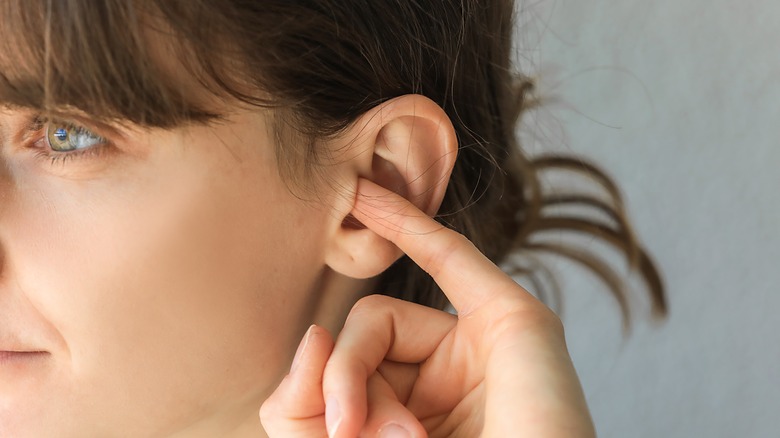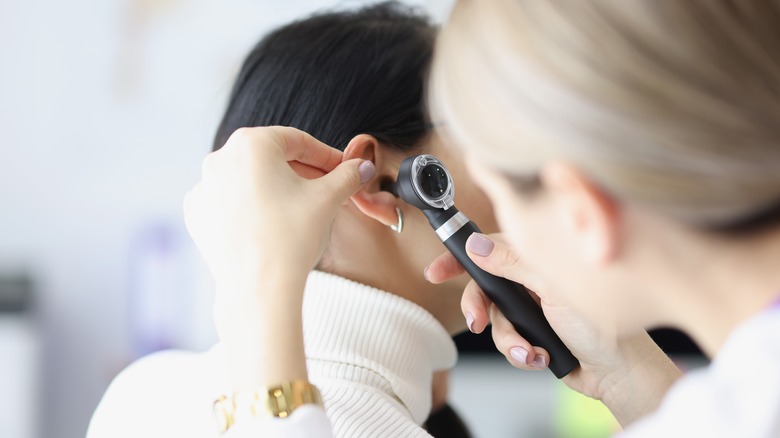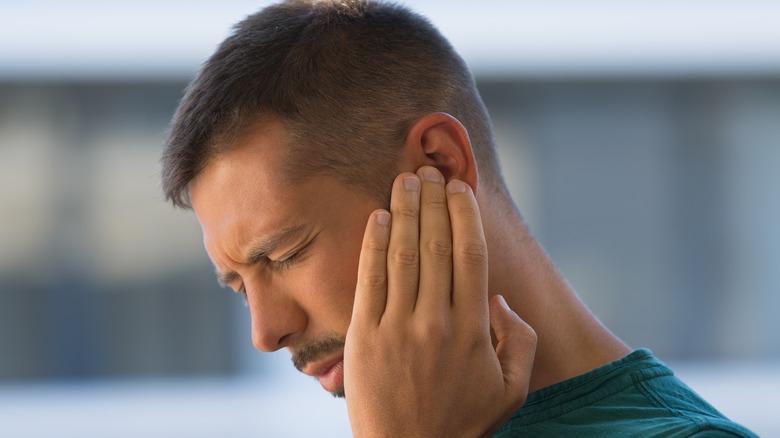The Best Ways To Remove Ear Hair And Methods To Avoid
We live in a world where appearance often matters, and hair on the skin is one of the factors that can affect how others perceive us. Although hair is a natural and necessary part of our body, it can be seen as unattractive, especially in unexpected areas of the body. Ear hair, in particular, is one example — it can be found emerging from the ear canal (targi hair) and on the outer ear (vellus hair), says Healthline. Both types are a natural part of the body's hair growth. Just like nose hair, ear hair protects our ears from dust and other harmful particles that could enter the ear canal, per WebMD. Sometimes the hair will thicken and become more apparent as people age, though this is more common in men than in women.
The question of whether ear hair should be trimmed is usually cosmetic — if you don't like the sight of the hair or if it's causing discomfort, trimming might be an option. However, this should be done carefully to avoid damaging the sensitive skin inside the ear canal, which can lead to pain, infection, or injury.
Some hair-removal methods are safer than others
According to Healthline, you can safely remove ear hair by using trimmers. However, this isn't a lasting solution and will require regular effort. Laser hair removal is another option. This procedure involves using light beams to remove hair from various body parts, according to the Mayo Clinic. During the procedure, a handheld device is used to deliver laser energy to the hair follicles, which destroys the hair and prevents it from growing back.
For hair on the outer ear, another option is to shave it, explains WebMD. This method is a little risky, and you must be careful to avoid cuts. Shaving can also cause skin irritation and ingrown hairs, a condition that occurs when hair grows back into the skin rather than growing out of it. Another downside of shaving is that, just like with trimmers, hair can still grow back in a few days.
Whichever option you choose is up to you. However, some hair removal methods — like waxing or hair removal creams — aren't recommended. Although they may appear to be fast and straightforward solutions, the chemical components present in hair removal wax or depilatory creams may irritate delicate regions like the ears, per Amplifon. In addition, you should also avoid using nail clippers and scissors to prevent injury and infection.
What happens ear hair grows too long?
While ear hair is a natural and necessary part of the body's defense system, too much ear hair can cause problems. Excess ear hair can trap earwax and other debris, leading to blockages and potentially causing conditions like swimmer's ear, says Healthline. Also known as otitis externa, swimmer's ear affects the outer ear canal. It is typically caused by water trapped in the ear canal, which creates a bacteria-friendly moist condition, according to the Mayo Clinic.
Symptoms of a swimmer's ear may include ear pain, itching, redness, swelling, and discharge. The ear may also feel blocked or full, affecting hearing. In severe cases, the infection may spread to the lymph nodes in the neck and cause fever or other symptoms. Generally speaking, removing ear hair may help prevent or relieve various ear-related conditions, including tinnitus, explains Healthline. Please consult your doctor for further advice and information about removing ear hair.



